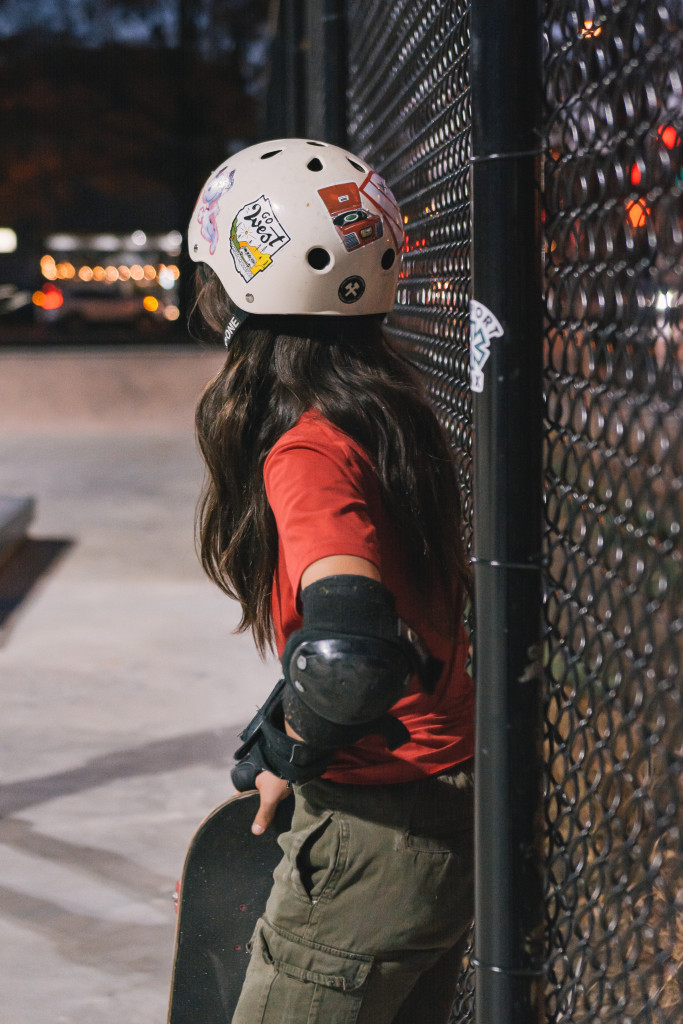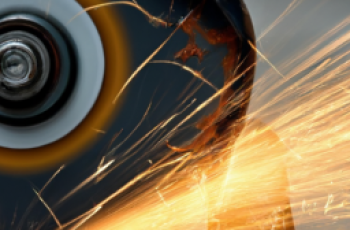In the world of die grinders, it is crucial to understand the compatibility between the tool and the materials you’ll be working with. Whether you’re a professional or a DIY enthusiast, knowing which materials are suitable for your die grinder can save you time, effort, and even prevent potential damage. In this article, we’ll explore the importance of die grinder material compatibility and provide you with valuable insights to ensure successful grinding projects.

Understanding Die Grinders
What is a Die Grinder?
A die grinder is a handheld power tool that is used for grinding, sanding, polishing, or cutting different materials. It is similar to a rotary tool but is more powerful and versatile. The tool gets its name from the small, pointed shape of the grinding bits it commonly uses, which resemble dice (hence the term “die” grinder).
Die grinders come in various sizes and power outputs, ranging from small handheld models for intricate work to larger, more powerful ones for heavy-duty applications. They are widely used in industries such as metalworking, woodworking, automotive, and construction.
Applications of Die Grinders
Die grinders have a wide range of applications, thanks to their versatility and power. Some common uses of die grinders include:
-
Grinding and shaping metal surfaces: Die grinders are often used by metalworkers to smooth rough edges, remove weld slag, or shape metal pieces.
-
Polishing and buffing: With the use of polishing pads and buffing wheels, die grinders can be employed to achieve a smooth and shiny finish on metal, wood, or plastic surfaces.
-
Cutting and carving: Die grinders can be equipped with different cutting attachments, such as cutter wheels or carbide burrs, to cut through various materials or carve intricate designs.
-
Cleaning and deburring: Wire brushes and sanding discs can be attached to die grinders to remove rust, paint, or burrs from surfaces.
The versatility and compact size of die grinders make them a valuable tool for professionals and DIY enthusiasts alike.
Importance of Material Compatibility
When using a die grinder, it is crucial to ensure that the materials being worked on are compatible with the tool and accessories. Incompatible materials can lead to reduced efficiency, excessive wear on the grinder or accessories, and even potential safety hazards.
Different materials have varying hardness, thermal conductivity, chemical properties, and magnetic properties. These factors can affect the performance and durability of the die grinder and its accessories. Understanding material compatibility is essential for achieving optimal results and prolonging the lifespan of the tool.
Common Die Grinder Materials
Die grinders are made from various materials, each with its unique properties and applications. Here are the most common materials used for die grinders:
Steel
Steel die grinders are the most popular and widely used. They are durable, resistant to wear and tear, and capable of handling high-speed operations. Steel die grinders are ideal for heavy-duty tasks and can be used with a wide range of materials.
Aluminum
Aluminum die grinders are lightweight and offer excellent heat dissipation. They are suitable for tasks that require prolonged use, as they minimize operator fatigue. Aluminum die grinders are commonly used in automotive workshops and for precision machining.
Brass
Brass die grinders are known for their corrosion resistance and low magnetic properties. They are commonly used in environments where non-sparking tools are required, such as in the presence of flammable materials or in explosive atmospheres.
Copper
Copper die grinders are highly conductive and suitable for applications that require efficient heat dissipation. They are often used in electrical work and for shaping or polishing copper or brass surfaces.
Plastic
Plastic die grinders are lightweight and affordable. They are commonly used for light-duty tasks and in applications where low vibration is required. Plastic die grinders are also ideal for working on delicate materials or in tight spaces.
Factors Affecting Material Compatibility
Several factors should be considered when assessing the compatibility between the die grinder and the materials being worked on. These factors include:
Surface Hardness
Some materials, such as hardened steel or ceramic, are extremely hard and require a die grinder with high power output and strong abrasives. Soft materials, on the other hand, can be easily damaged by a powerful die grinder and may require less aggressive grinding accessories.
Thermal Conductivity
Materials with high thermal conductivity, such as aluminum or copper, require die grinders with good heat dissipation capabilities. Excessive heat buildup can damage both the material being worked on and the die grinder itself.
Chemical Compatibility
Certain materials may react with the grinding or cutting accessories used with the die grinder. It is important to choose materials and accessories that are chemically compatible to avoid chemical reactions or damage to the die grinder.
Magnetic Properties
Some materials, such as steel or iron, are magnetic. Die grinders with magnetic properties can be advantageous when working with these materials, as they can assist in holding magnetic accessories or attracting metal debris.
Compatibility Chart for Die Grinder Materials
To ensure proper material compatibility, it is helpful to consult a compatibility chart that provides information on which materials can be safely worked on with a specific die grinder. Below is a breakdown of compatibility for common die grinder materials:
Steel Compatibility with Other Materials:
- Steel: Compatible
- Aluminum: Compatible
- Brass: Compatible
- Copper: Compatible
- Plastic: Compatible
Aluminum Compatibility with Other Materials:
- Steel: Compatible
- Aluminum: Compatible
- Brass: Compatible
- Copper: Compatible
- Plastic: Compatible
Brass Compatibility with Other Materials:
- Steel: Compatible
- Aluminum: Compatible
- Brass: Compatible
- Copper: Compatible
- Plastic: Compatible
Copper Compatibility with Other Materials:
- Steel: Compatible
- Aluminum: Compatible
- Brass: Compatible
- Copper: Compatible
- Plastic: Compatible
Plastic Compatibility with Other Materials:
- Steel: Compatible
- Aluminum: Compatible
- Brass: Compatible
- Copper: Compatible
- Plastic: Compatible

Material Considerations for Die Grinder Accessories
Different die grinder accessories are designed to work with specific materials. Ensuring proper compatibility between the accessory and the material being worked on is crucial for achieving the desired results. Here are some commonly used die grinder accessories and their material considerations:
Grinding Bits
Grinding bits come in various shapes and abrasiveness levels. When selecting grinding bits, consider the hardness and sensitivity of the material being ground. Softer materials may require finer grit grinding bits to prevent damage.
Cutter Wheels
Cutter wheels are used for cutting through various materials, such as metal or plastic. The choice of cutter wheels should be based on the material’s hardness and thickness. Harder materials may require carbide or diamond-coated cutter wheels for efficient cutting.
Polishing Pads
Polishing pads are used with abrasive compounds to achieve a smooth and shiny finish. The choice of polishing pads depends on the material being polished and the desired level of gloss. Softer materials may require softer, foam-based polishing pads to avoid excessive abrasion.
Wire Brushes
Wire brushes are used for cleaning, deburring, or rust removal. The type of wire brush selected should match the material being worked on. Brass or stainless steel wire brushes are commonly used for delicate surfaces, while steel wire brushes are suitable for heavy-duty cleaning.
Sanding Discs
Sanding discs come in various grit sizes for different levels of material removal. When using sanding discs, consider the material’s hardness and sensitivity. Softer materials may require lower grit sanding discs to prevent excessive material removal.
Safety Precautions for Die Grinder Material Compatibility
When working with die grinders, it is essential to prioritize safety. Here are some safety precautions to follow to ensure proper material compatibility:
Proper Ventilation
Always work in a well-ventilated area or use proper ventilation equipment when grinding materials. Grinding processes can generate dust, fumes, or particles that may be harmful to breathe in. Proper ventilation helps minimize exposure to potentially hazardous substances.
Personal Protective Equipment
Wear appropriate personal protective equipment (PPE) to protect yourself from potential hazards. This may include safety goggles, a face shield, ear protection, a dust mask, and gloves. PPE helps prevent injuries, such as eye injuries from flying debris or respiratory issues from dust inhalation.
Operational Limitations
Understand the limitations of your die grinder and its accessories. Avoid exceeding the recommended speed, pressure, or runtime for the specific material being worked on. Overworking the tool or applying excessive force can lead to accidents, material damage, or premature wear on the die grinder.

Selecting the Right Die Grinder for Material Compatibility
To ensure optimal performance and longevity of your die grinder, it is important to choose the right tool for the material compatibility. Consider the following factors when selecting a die grinder:
Power Output
Select a die grinder with sufficient power output for the materials you work with most often. Higher power output allows for faster material removal and better performance on harder materials.
Speed Control
Choose a die grinder with adjustable speed control. Different materials may require different grinding speeds for optimal results. Speed control allows for better precision and control based on the material being worked on.
Grinding Wheel Compatibility
Ensure that the die grinder’s grinding wheel compatibility matches the accessories you use or plan to use. Check the specifications and recommended wheel types for compatibility with the materials you work on.
Accessories Compatibility
Consider the availability of a wide range of compatible accessories for the die grinder you choose. Having access to a variety of accessories allows for more versatility and flexibility in different applications and material types.
Tips for Maintaining Die Grinder Material Compatibility
Regular maintenance is essential to keep your die grinder in optimal condition and ensure material compatibility. Here are some tips for maintaining die grinder material compatibility:
Regular Cleaning and Lubrication
Clean your die grinder regularly to remove any debris or buildup that may affect its performance. Lubricate moving parts to reduce friction and prevent premature wear. Follow the manufacturer’s recommendations for cleaning and lubrication intervals.
Inspecting and Replacing Worn-out Parts
Regularly inspect your die grinder and its accessories for signs of wear or damage. Replace worn-out or damaged parts promptly to maintain optimal performance and prevent potential accidents or material damage.
Proper Storage and Handling
Store your die grinder and its accessories in a clean and dry environment. Avoid exposing the tool to extreme temperatures or humidity, as it can affect its performance and lifespan. Handle the die grinder with care and avoid dropping it or subjecting it to unnecessary impacts.
Common Issues with Die Grinder Material Compatibility
Using incompatible materials or accessories with your die grinder can lead to several issues. Here are some common problems that may arise:
Excessive Material Wear
Using the wrong accessories or applying excessive force on the die grinder can cause excessive material wear. This can result in reduced efficiency, poor performance, and the need for more frequent replacements.
Reduced Efficiency
Incompatible materials can lead to reduced grinding or cutting efficiency. It may require more time and effort to achieve the desired results, resulting in decreased productivity and increased frustration.
Potential Safety Hazards
Incompatible materials can pose safety hazards, such as accidents caused by accessories breaking, flying debris, or overheating. Following proper material compatibility guidelines helps minimize the risk of accidents or injuries.
Conclusion
Understanding die grinder material compatibility is essential for achieving optimal results, prolonging the lifespan of your tool, and ensuring a safe working environment. By considering factors such as hardness, thermal conductivity, chemical compatibility, and magnetic properties, you can select the right die grinder and accessories for your specific applications.
Following best practices, such as proper ventilation, wearing personal protective equipment, and adhering to operational limitations, helps ensure safety and prevent potential accidents. Regular maintenance, including cleaning, lubrication, and timely replacement of worn-out parts, keeps your die grinder in excellent condition and ensures efficient material compatibility.
By taking the time to understand and apply material compatibility principles, you can enhance your die grinder’s performance, increase productivity, and deliver high-quality results in your grinding, cutting, and polishing tasks.



